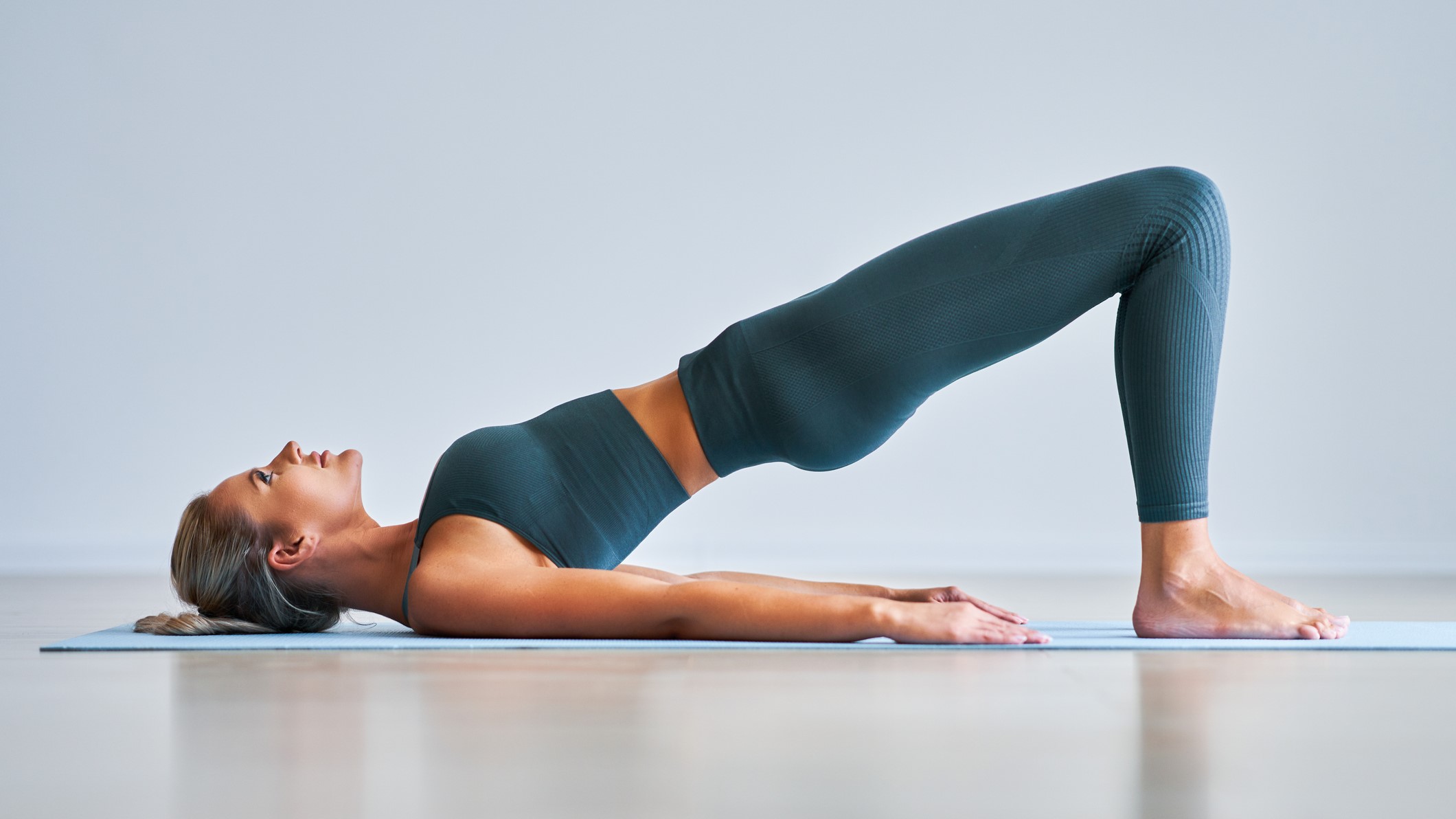
There’s a reason why Pilates workouts are becoming so popular — it works your deep, inner core muscles, improve your posture, reduce back pain, and work on your flexibility and mobility. Pilates has been around for years — it was created by Joseph Pilates in the early 20th century — but it’s recently boomed in popularity, with a number of celebrities crediting Pilates for creating toned muscles. Here’s what an hour of Pilates can do for your body.
The best part? Pilates is low-impact, so it's suitable for just about anyone. It’s often recommended by doctors and physiotherapists for athletes recovering from an injury, and most instructors will be able to offer modifications in classes. While it won’t leave you dripping in sweat, Pilates strengthens your body through small, repetitive movements. Classes can be done on an exercise mat, a reformer Pilates machine, or if you’re unable to travel, or don’t have the budget for a class, from home for free! Check out 9 of the best Pilates exercises for targeting your core here.
If you are looking for a free class to add to your routine, we unrolled our exercise mat (check out the best yoga mats here) and tried a 15-minute sculpting full-body Pilates workout by instructor Lilly Sabri. It’s part of her free two-week Pilates course, which we’ll be trying soon. Read on to find out what happened.
15-minute sculpting full-body Pilates workout
Like all of Sabri’s workouts, she gets right to it. There’s a warm-up (that doesn’t feel all that much like a warm-up), followed by a legs section, and an ab section. The good news is, you’re done in 15 minutes. The bad news: this one hurts!
Here are some of the exercises involved:
Knee and toe tap clamshells:
To begin, lie on your right side, with your feet, legs, and hips stacked on top of each other and your knees bent at 45 degrees. Rest your head on your right arm (or prop yourself up and rest your head in your hand) and engage your core to help you maintain stability during the move. Peel the top leg off the bottom, keeping your knees together, pause at the top, then lift your top knee to the ceiling and tap your heels together. Keep switching between the knee and ankle tapping.
Here’s what happened when this fitness editor did resistance band clamshells for a week.
Side leg raises:
To do side leg raises, start by lying on your side, with your core engaged, and your lower arm supporting your head. Make a slight bend in the knee closest to the floor, then engage your abs and glutes, and raise your top leg, keeping the foot flexed. Pause at the top, then lower your leg back down to touch your other leg.
Double toe tap and leg extensions:
For this exercise, start lying on your back, with your lower back pressed into the floor and your legs in table top position and your arms by your side. Engage your core, thinking about sucking your belly button into your spine. Keeping the bend in your knee, lower both legs to the floor slowly and with control, tapping your toes down on the floor, then raising them back to your starting position. If your lower back starts to lift off the floor, reduce your range of motion. Once they are back in tabletop position, extend one leg out away from your body, then the other. Then repeat.
I tried this 15-minute sculpting full-body Pilates workout — here’s what happened
I’m currently tapering for my fifth marathon, so I'm doing one Pilates class a week to help keep my muscles firing, without loading too much weight onto them so close to the race. It only took a few minutes of the warmup for this workout to get my glutes firing, and it was a real reminder of how simple and effective Pilates can be when it comes to toning and sculpting strong muscles.
The single-leg work at the start of the class reminded me that I needed to do more Pilates, as after a lot of running, my left side was a lot weaker than my right. One aspect that’s especially important if you spend a lot of time sitting behind a desk, Pilates focuses on good alignment in the body, supported by a strong core. This is why it’s great for runners, cyclists, or anyone who practices sport, as it helps you work on areas of weakness in your body and prevent injuries.
15-minutes later, as I got up off my mat, I had that wonderful post-Pilates ache in my core. For me, a strong core is far more than just an aesthetic goal. Core strength can help you run stronger, lift heavier, sit with better posture, and avoid injuries. If working on your core is your goal, Pilates is a good choice — in fact, one study found that two-hour-long Pilates classes a week for 12 weeks improved abdominal strength and upper back posture.
This class was a reminder that, once the marathon is over, adding a couple of Pilates classes a week to my routine is a must. Looking for more inspiration? Check out our other Pilates classes you can do from home below.







